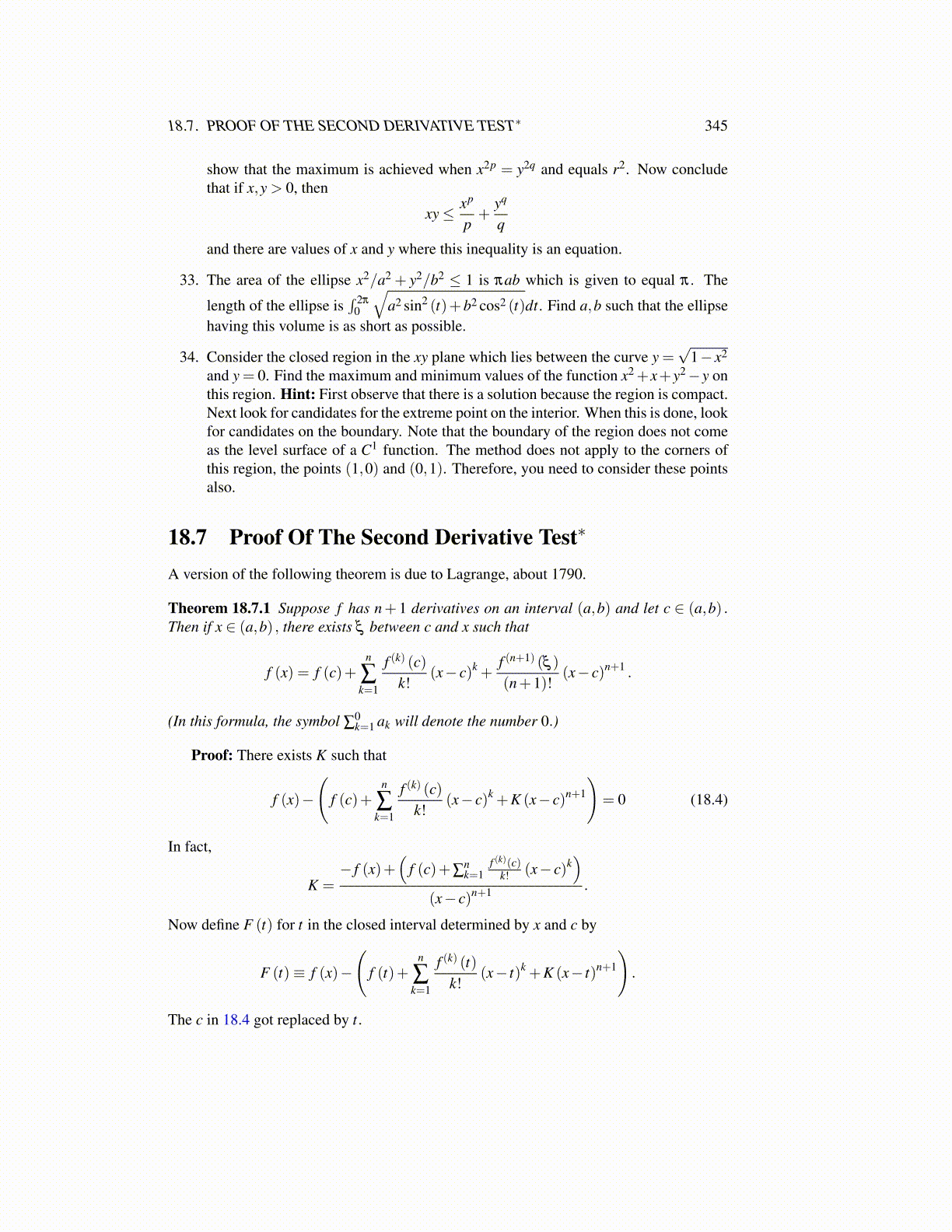
18.7. PROOF OF THE SECOND DERIVATIVE TEST∗ 345
show that the maximum is achieved when x2p = y2q and equals r2. Now concludethat if x,y > 0, then
xy≤ xp
p+
yq
q
and there are values of x and y where this inequality is an equation.
33. The area of the ellipse x2/a2 + y2/b2 ≤ 1 is πab which is given to equal π . The
length of the ellipse is∫ 2π
0
√a2 sin2 (t)+b2 cos2 (t)dt. Find a,b such that the ellipse
having this volume is as short as possible.
34. Consider the closed region in the xy plane which lies between the curve y =√
1− x2
and y = 0. Find the maximum and minimum values of the function x2+x+y2−y onthis region. Hint: First observe that there is a solution because the region is compact.Next look for candidates for the extreme point on the interior. When this is done, lookfor candidates on the boundary. Note that the boundary of the region does not comeas the level surface of a C1 function. The method does not apply to the corners ofthis region, the points (1,0) and (0,1). Therefore, you need to consider these pointsalso.
18.7 Proof Of The Second Derivative Test∗
A version of the following theorem is due to Lagrange, about 1790.
Theorem 18.7.1 Suppose f has n+ 1 derivatives on an interval (a,b) and let c ∈ (a,b) .Then if x ∈ (a,b) , there exists ξ between c and x such that
f (x) = f (c)+n
∑k=1
f (k) (c)k!
(x− c)k +f (n+1) (ξ )
(n+1)!(x− c)n+1 .
(In this formula, the symbol ∑0k=1 ak will denote the number 0.)
Proof: There exists K such that
f (x)−
(f (c)+
n
∑k=1
f (k) (c)k!
(x− c)k +K (x− c)n+1
)= 0 (18.4)
In fact,
K =− f (x)+
(f (c)+∑
nk=1
f (k)(c)k! (x− c)k
)(x− c)n+1 .
Now define F (t) for t in the closed interval determined by x and c by
F (t)≡ f (x)−
(f (t)+
n
∑k=1
f (k) (t)k!
(x− t)k +K (x− t)n+1
).
The c in 18.4 got replaced by t.